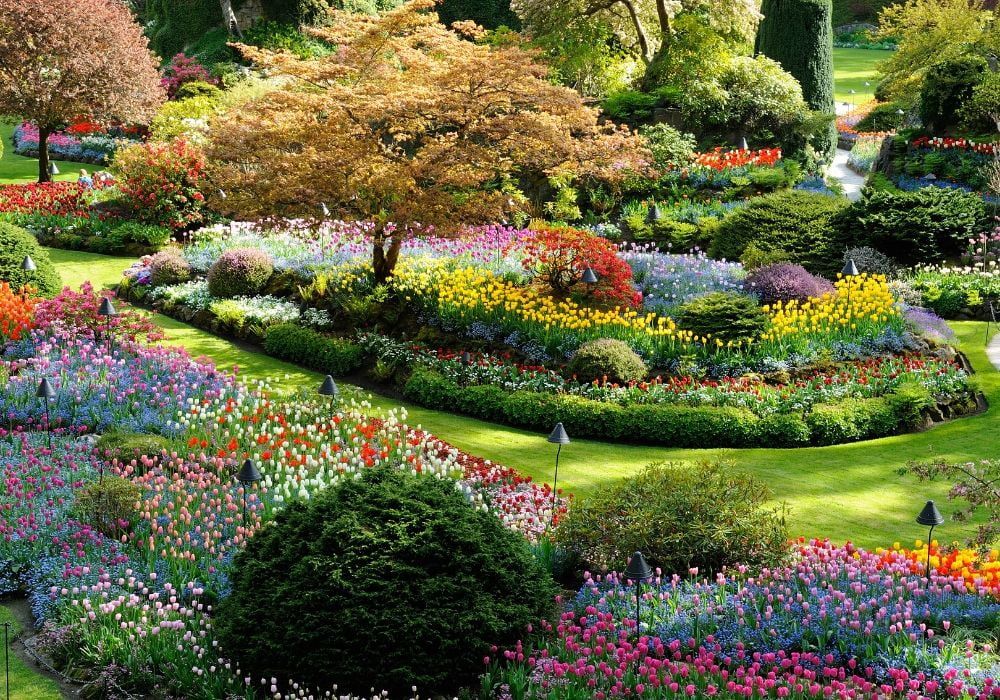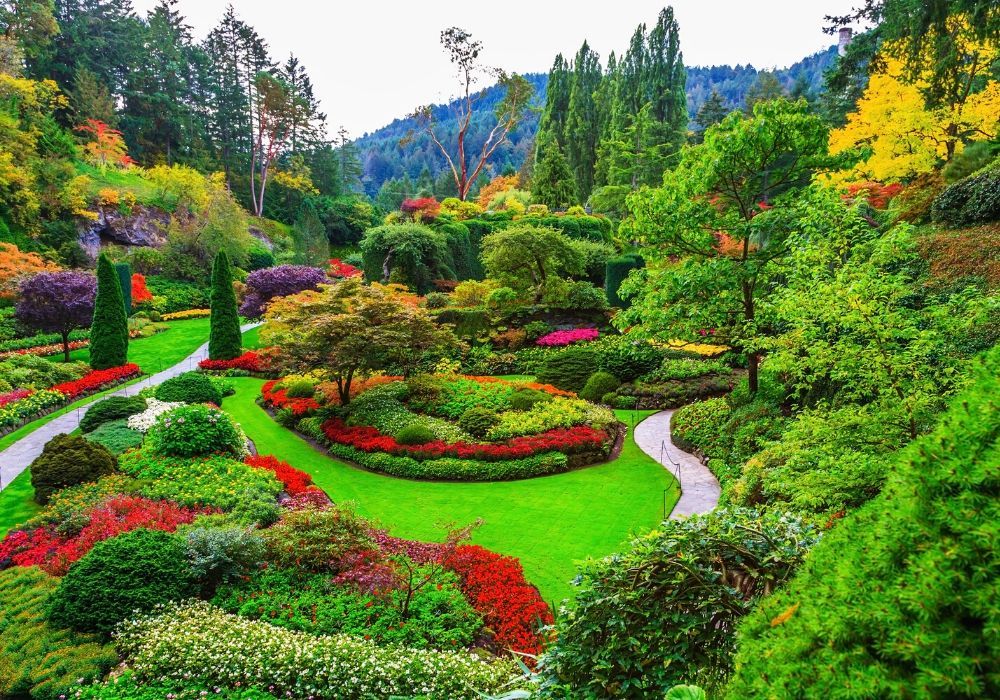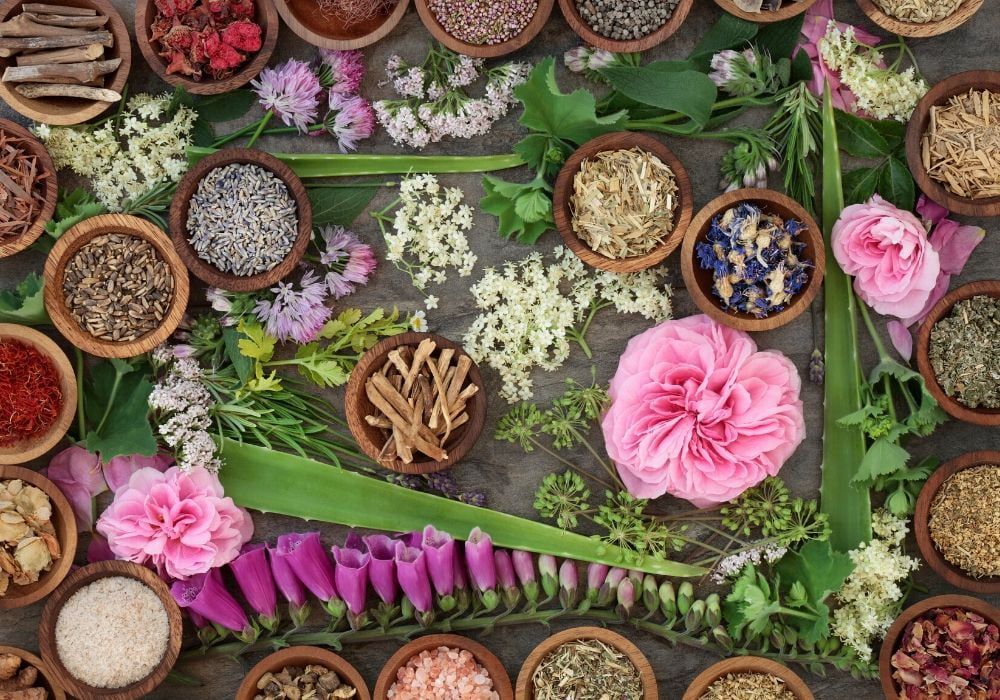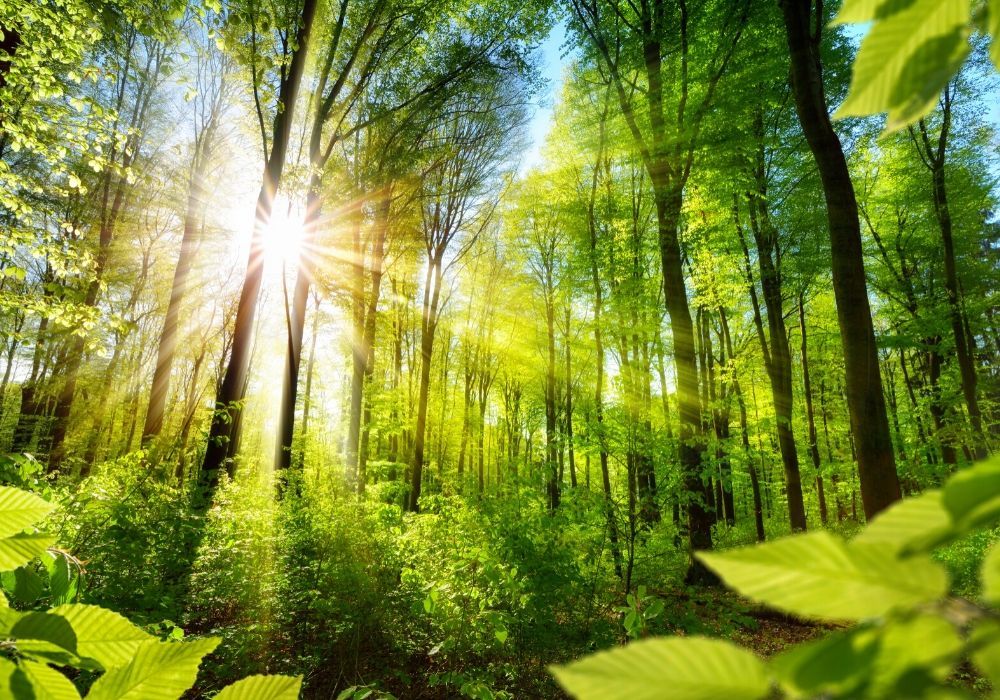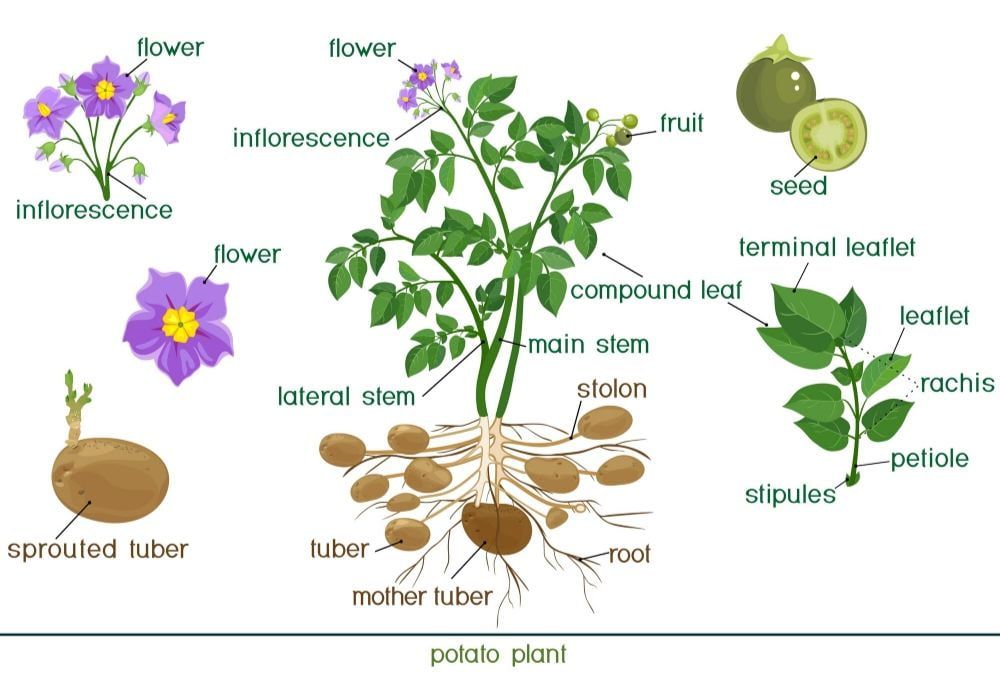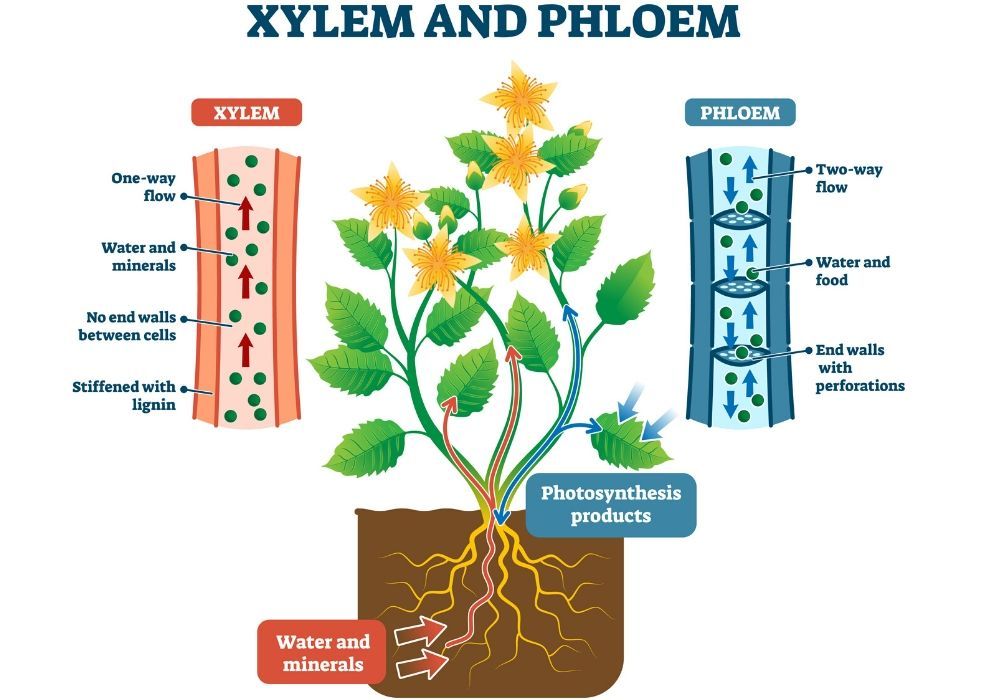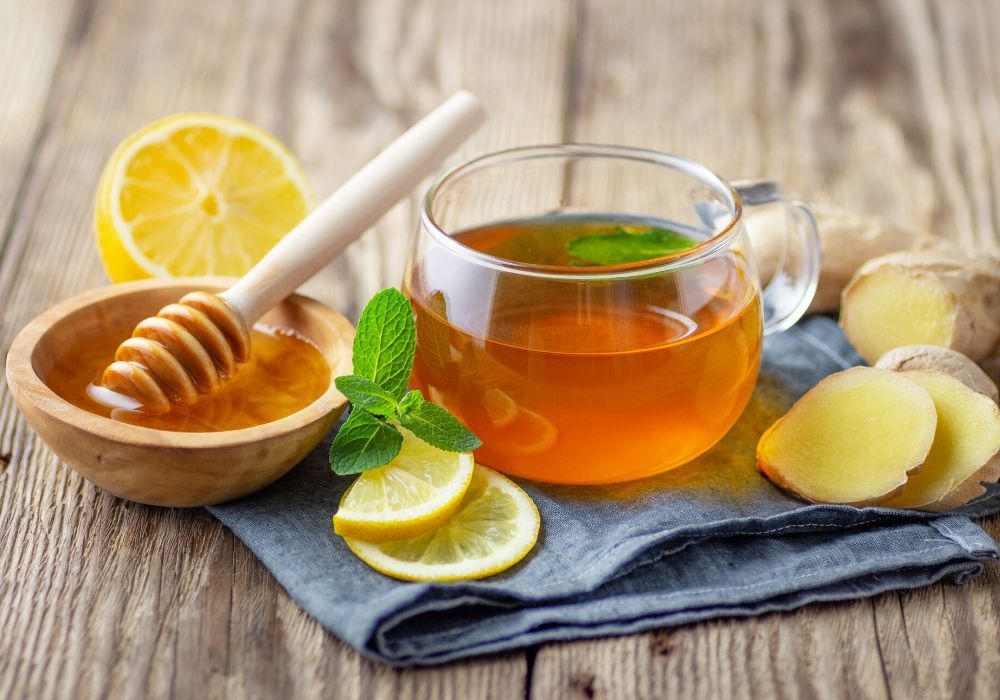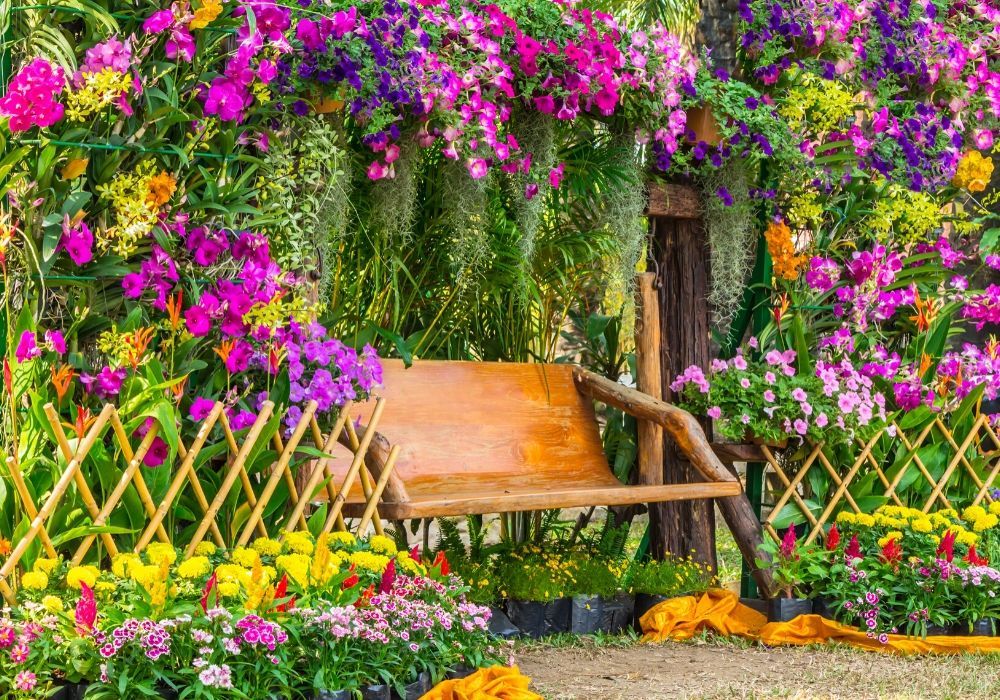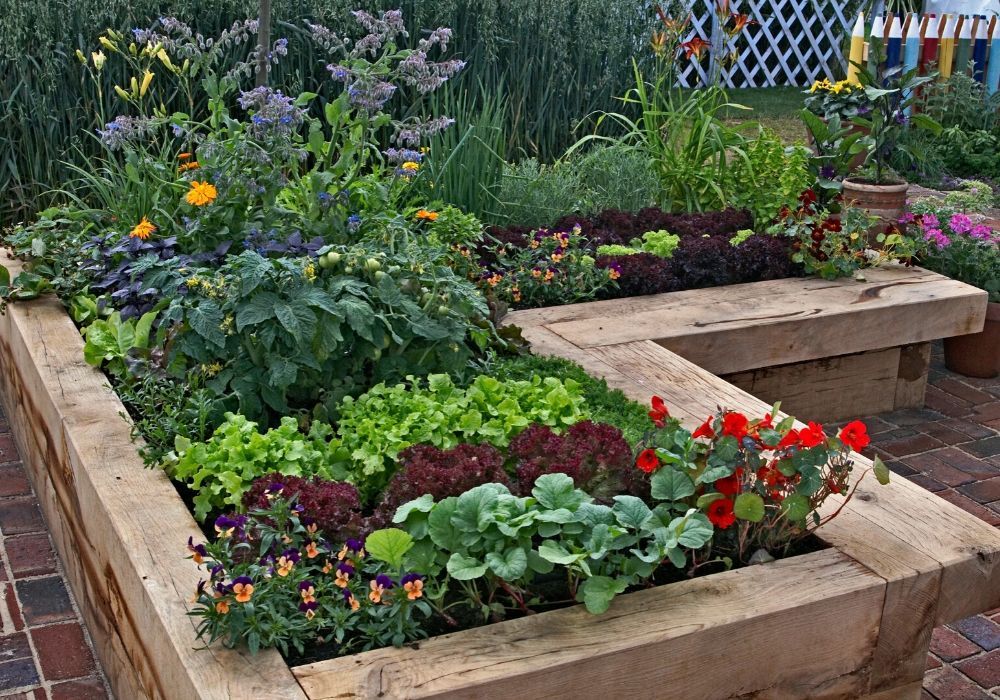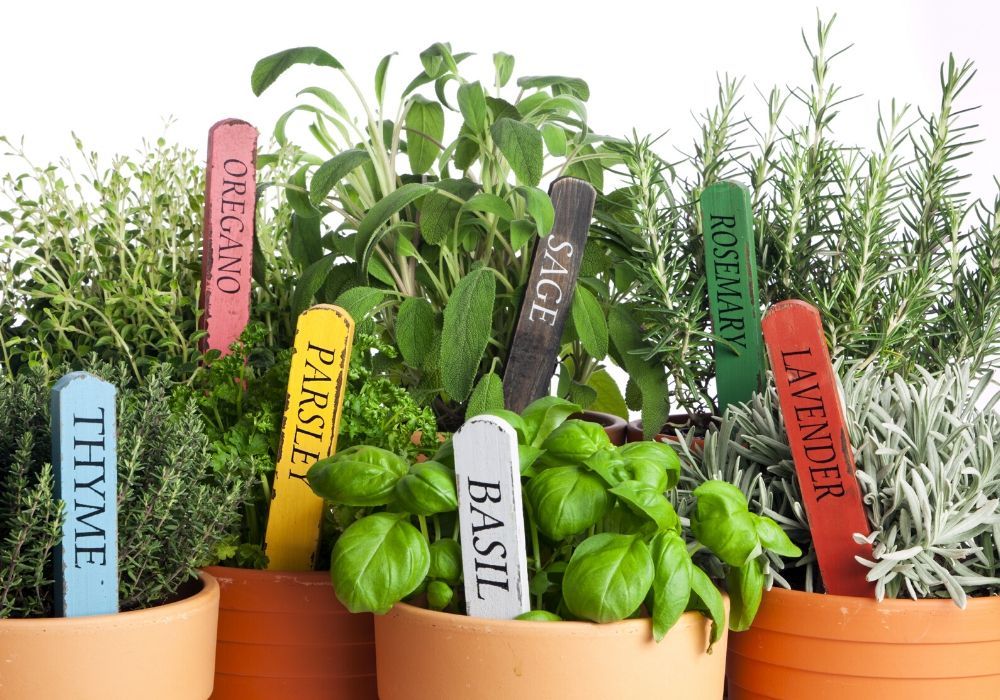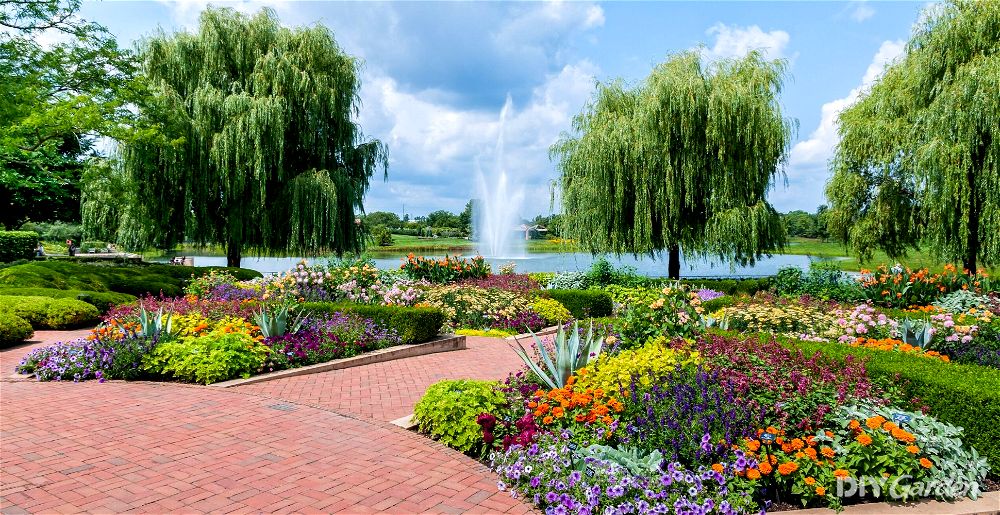
Botany, understood broadly, is among the oldest branches of science, with origins in the distant past. Interest in plants goes back about as far as human history itself. Our earliest ancestors have always been a part of the larger natural world and have relied on plants for food, shelter, and other basic needs.
Botany remains an incredibly interesting and useful subject today. This guide covers some of the fundamental elements of botany: a brief history of the field, an explanation of basic plant evolution and anatomy, and an overview of the more practical uses of plants, from herbal medicine to home-grown vegetable gardens.
What Is Botany?
Also known as plant science or phytology, botany is the science of plant life, involving the study of the 400,000+ species of plants that inhabit the land around us.
Over time, people learned to identify numerous different kinds of plants, discerned which were useful for food or medicine, and began to cultivate certain species. Medieval monasteries and early modern universities are particularly well-known for advancing our knowledge of botany through the deliberate cultivation of gardens.
The academic study of plants has continued over the centuries, and new technologies have led to new possibilities. Tools such as microscopes have dramatically increased our knowledge of the natural world.
Today, academic botanists research many different questions. They study topics such as plant reproduction, plant growth, plant diseases, and more. This research has many applications, from improving crop yields to synthesizing new chemicals to managing ecosystems.
Outside the academy, countless people are interested in the study of plants for their own reasons. You might go on regular hikes and wish you could identify all the wildflowers you see. Perhaps you just bought a house and want to improve the landscaping. Or maybe you hope to grow your own vegetables. In all of these cases, a little knowledge of botany will help you out!
Why Is Botany Important?
Understanding the plant world is essential to understanding the whole world. Plants produce much of our oxygen. They make up many of our foods and medicines. Plants create habitats for numerous animal species. Plant roots hold the soil in place and prevent erosion. Botany helps us learn how plants work and appreciate their multifaceted role in our lives.
Botanists’ discoveries have led to many significant advancements, particularly in areas such as agriculture and nutrition. In addition, botany can inform our solutions to urgent challenges such as climate change, loss of biodiversity, conservation, resource management, and more.
History of Botany
In prehistory and the ancient world, people strove to identify different kinds of plants, learning which were edible, which had medicinal properties, and which were poisonous. Over time, they learned how to cultivate certain plants deliberately, rather than foraging for them in the wild.
In the ancient world, interest in plants led to foundational texts such as Enquiry into Plants, written c. 4th-3rd centuries BCE by the Greek scholar Theophrastus. You can read an English translation of this work here: Books 1-5 and Books 6-9. Theophrastus covered topics such as plant anatomy and reproduction, as well as plants’ medicinal uses.
During the Middle Ages, people continued to learn about, cultivate, and use plants in various ways. Monasteries often cultivated gardens full of herbs for use in food and medicine. Monastic infirmary gardens contained plants such as sage, comfrey, betony, hyssop, rue, and chamomile.
Much like today, chamomile was used in teas and held to have health benefits. Comfrey was grown to help reduce inflammation and heal wounds.
During the 16th century, universities began to cultivate botanical gardens. Italian universities are particularly renowned for this practice, and you can still visit the Orto Botanico di Padova, an academic botanical garden affiliated with the University of Padua and founded in 1545.

Scholars used botanical gardens not only to learn more about the medicinal properties of various plants, but also to learn more about the natural world in general. “Botany” thus increasingly emerged as an academic field.
Advances in botany continued down the centuries. Major figures and developments include:
- Carl von Linné (Linnaeus) (1707-1778): This Swedish botanist and naturalist is known as the “Father of Taxonomy.” He collected plants and worked to identify, name, and classify them.
- Charles Darwin (1809-1882): His 1859 work On the Origin of Species advanced his theory of evolution, which changed understandings of how organisms had developed over long periods of time and how relationships were configured among different species.
- Gregor Mendel (1822-1884): Famous for his research on pea plants, Mendel laid the foundation for the modern science of genetics and inheritance.
- Katherine Esau (1898-1997): A prominent botanist, Esau published the textbooks Plant Anatomy and The Anatomy of Seed Plants.
Additional Resources
- Penelope Hobhouse, Gardening Through the Ages: An Illustrated History of Plants and Their Influence on Garden Styles—from Ancient Egypt to the Present Day (New York: Simon & Schuster, 1992).
World’s Most Interesting Botanical Gardens
Botanical gardens have a long history, and they remain an excellent way to cultivate your love of the natural world. Here are just a few of my favorites:
- Singapore Botanical Gardens (Singapore): The first UNESCO World Heritage site in Singapore, these gardens offer a vibrant, green escape from the city. My favorite part is the orchid garden with its 1000+ species of orchids.
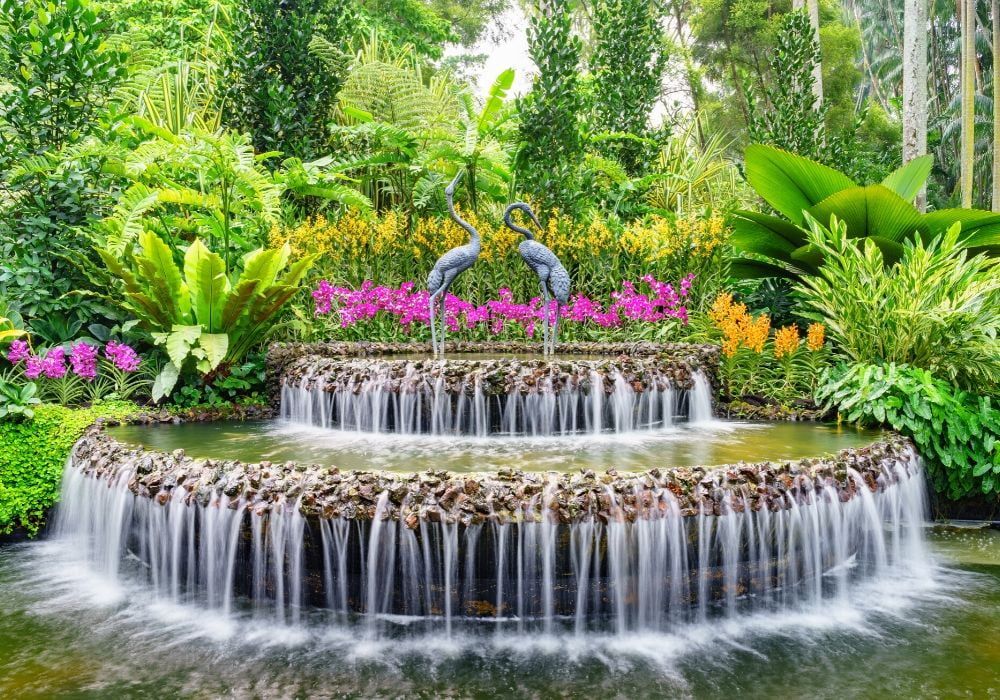
- Fondation Claude Monet (Giverny, France): Have you ever seen one of Monet’s iconic water lily paintings? They were inspired by his own garden in Giverny, France, and you can be just as inspired by the gardens today. You can take a virtual tour of the house and learn more about the gardens on the foundation website.
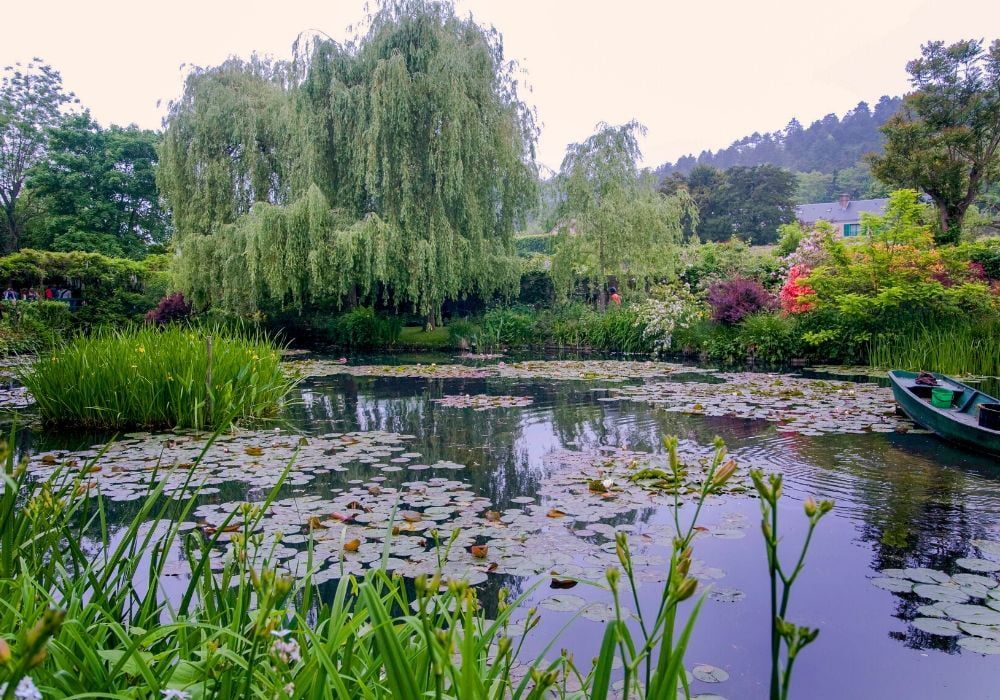
- Kew Gardens (London, England): I love the incredible variety at Kew Gardens, which allow you to “walk through 10 climates” without ever leaving London. Even if you’re stuck at home, you can enjoy Kew virtually; I recommend doing so with a cup of herbal tea to help you recreate the floral scents.
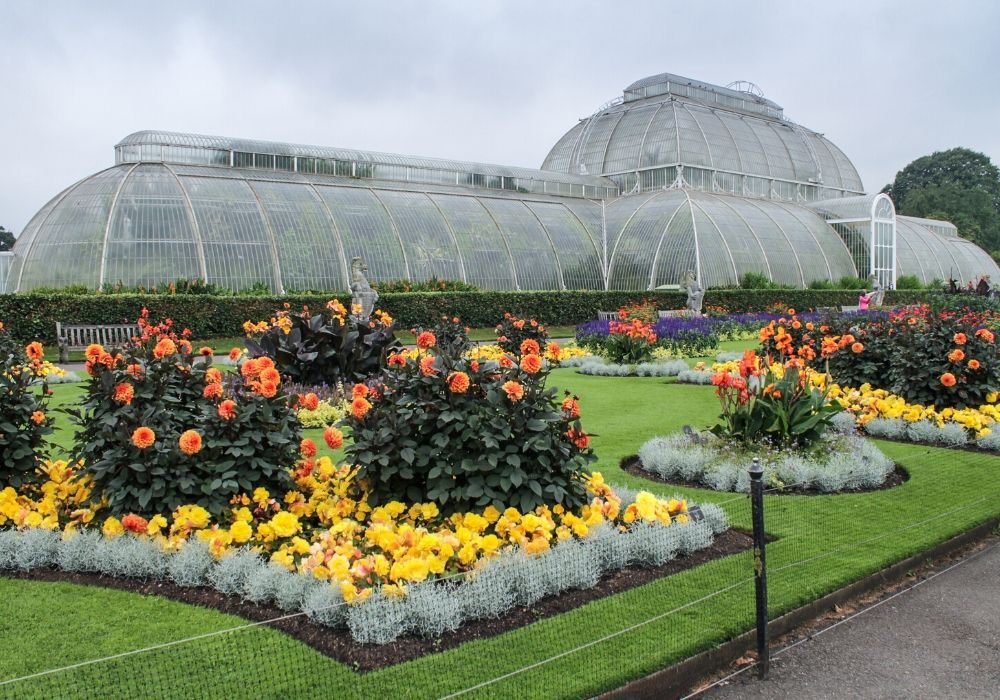
- Jardim Botânico (Rio de Janeiro, Brazil): Leave the sprawling city behind and enjoy views of Christ the Redeemer from the lush setting of this stunning botanical garden, which will make you feel as if you’re in the middle of the rainforest.
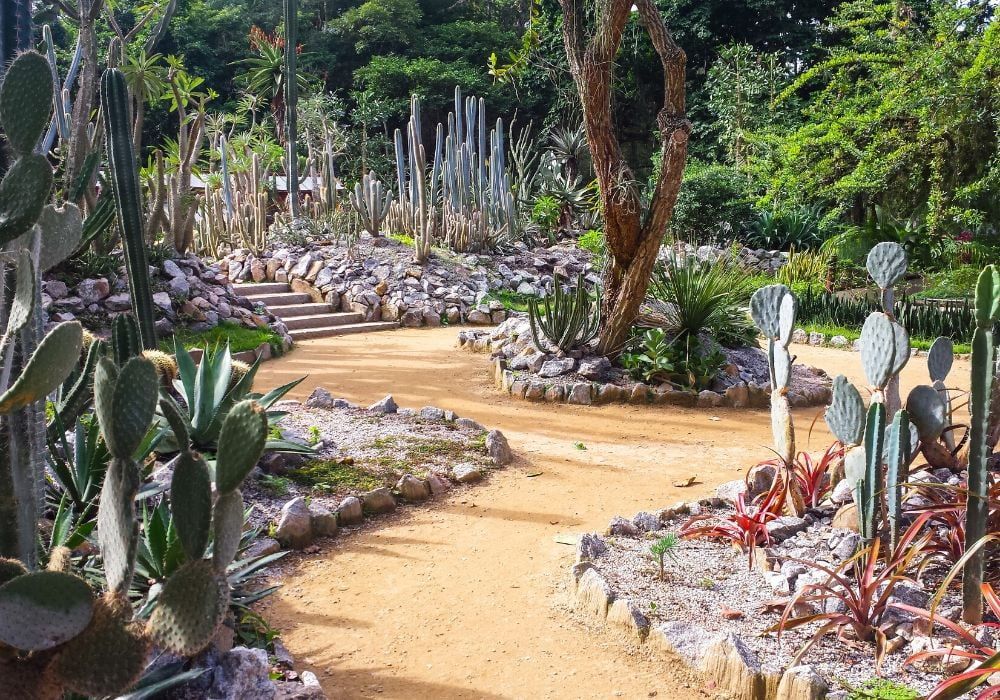
- Kirstenbosch National Botanical Garden (Cape Town, South Africa): Boasting over 1300 acres and 7000 plant species, these gardens even have a treetop walkway that allow you to appreciate nature from a different point of view.

- Missouri Botanical Garden (St. Louis, MO, USA): Founded in 1859, the Missouri Botanical Garden features a greenhouse in the shape of a geodesic dome as well as 79 acres of plant life, the perfect place for a relaxing walk. I especially love the Japanese strolling garden.
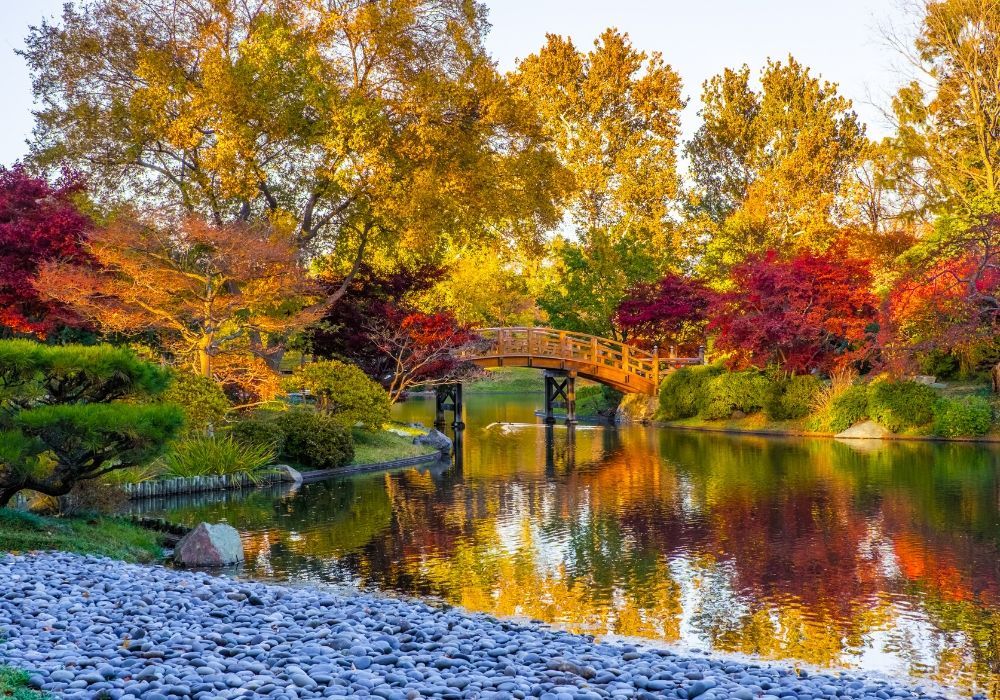
Botany 101
One simple and effective way to learn more about botany is to take an online course. Luckily, there are some excellent (and 100% free) courses out there!
If you check out Coursera, you’ll find a two-part introduction to botany offered by Dr. Daniel Chamovitz of Tel Aviv University: Understanding Plants – Part 1: What a Plant Knows and Understanding Plants – Part 2: Fundamentals of Plant Biology.
As Chamovitz explains, this course has 3 goals: “1. To introduce you to basic plant biology by exploring plant senses (sight, smell, hearing, touch, taste, balance). 2. To introduce you to biological research and the scientific method. 3. To get the student to question life in general and what defines us as humans.”
Coursera allows you to enroll in this course (any many others) for free. A certificate of completion is available for a small fee.
In the following sections, I’ll briefly discuss different aspects of botany (such as plant ecology and evolution) and point you toward resources for learning more.
Plant Ecology
Plant ecology falls under the wider umbrella of ecology, the study of how various organisms interact with other organisms and their surroundings.
Specifically, plant ecology refers to the study of plants within their wider environments. In the words of the Plant Ecology Lab at the Smithsonian Environmental Research Center: “We study plants and their interactions with other plants as well as other organisms: animals, fungi and bacteria. Our research spans the size scale from molecular to landscapes and it is conducted in wetland and terrestrial habitats.”
Plant ecologists ask questions like: How has a certain plant species adapted to its environment? How biodiverse is the flora in a given area? And how has the plant life in a region changed over time?
If you’re interested in ecology, I recommend this online class by Ana Luz Porzecanski, offered by the American Museum of Natural History and the Howard Hughes Medical Institute: Ecology: Ecosystem Dynamics and Conservation.
Plant Evolution
Like other organisms, plants have evolved over long periods of time. You can find a quick visual overview here: Cladogram of Plant Evolution.
We can essentially break down plant evolution as follows:
- Algae (seaweeds): the oldest plants
- Land plants
- Non-vascular plants (such as mosses)
- Vascular plants
- Non-seed plants (such as ferns)
- Seed plants
- Gymnosperms
- Angiosperms
The Earliest Plants
Algae are some of the oldest forms of plant life, appearing on the earth perhaps as early as 1+ billion years ago. Many millions of years later, land plants then evolved from green algae.
Mosses, liverworts, and hornworts are examples of non-vascular land plants. As you can more or less tell from their appearance, they doesn’t truly have stems, roots, or leaves. Since they lack specialized tissue to transport water, non-vascular plants tend to be small and live in moist places.
Vascular Plants
Over even more millions of years, evolutionary developments continued, leading to the emergence of vascular tissue, seeds, and eventually flowers.
Clubmosses are among the oldest vascular plants. These plants have specialized tissue known as xylem, which conducts water and provides support.
Ferns begin to show up in the fossil record from around 360 million years ago. Like clubmosses, ferns are another example of ancient vascular plants. Ferns reproduce using spores and do not have seeds or flowers.
Seed Plants: Gymnosperms and Angiosperms
These groups were then followed by gymnosperms (around 320 million years ago) and angiosperms (around 160 million years ago). Both gymnosperms and angiosperms produce seeds; the main difference is that angiosperm seeds are enclosed within fruit. (“Gymnosperm” translates as “naked seed”).
Odds are, most of the plants with which you’re familiar are angiosperms. It’s an incredibly diverse group of plants, comprising some 300,000 species. You can recognize angiosperms by their tendency to produce flowers and bear fruit.
What are the evolutionary advantages of flowers? Essentially, flowers improve the plant’s reproductive success. Instead of depending on wind to spread pollen, angiosperms attract animals (such as bees and butterflies) to their flowers. These pollinators spread the pollen around more efficiently.
Resources
If you’re interested in learning more about plants and their evolution, I recommend this online textbook by Michael McDarby: Online Introduction to the Biology of Animals and Plants, particularly Section 2. For instance, here you’ll find an overview of pollen, “an evolutionary milestone.”
You can also view this diagram, which clearly displays the major evolutionary developments that have led to different types of plants.
If you want to learn more about ferns, take a look at this online resource guide, which discusses fern anatomy, life history, reproduction, and more.
Trying to improve your ability to identify trees? Head to this page: Angiosperm or Gymnosperm?
Finally, if you’re curious why angiosperms have been so successful (to the point that they comprise about 80% of plant life on land), you’ll find some answers here.
Plant Anatomy
As is probably clear from the above section on plant evolution, plants are an incredibly varied form of life! Nevertheless, they do share some features in common. In this section on plant anatomy, I’ll focus on vascular plants. Here are the basic components of a vascular plant:
- Root: The plant’s roots are essential for water intake.
- Stem: The stem transports water through the plant and gives support to the plant’s structures.
- Leaf: Leaves are involved in photosynthesis.
Again, a vascular plant is one that has conducting tissues to move water and essential nutrients through the plant.
The plant’s vascular system is designed to transport water. It consists of the xylem, which brings water from the roots, through the stem, to the leaves; and the phloem, which brings sugars and various other products of photosynthesis where they are needed.
The xylem and phloem typically run alongside each other through the stem of the plant.
Photosynthesis is the process by which plants acquire energy. Plants are able to use sunlight, water, and carbon dioxide to make the glucose (sugar) that they need to survive.
As mentioned above, the plant’s roots take in water and minerals from the ground. The leaves meanwhile take in carbon dioxide from the surrounding air. Finally, as sunlight reaches the plant, this light provides the energy the plant needs to produce sugar and release oxygen into the air.
The basic equation of photosynthesis is as follows: 6CO2 + 6H2O + Light energy ???? C6H12O6 + 6O2.
In other words: carbon dioxide + water + light energy ???? sugar + oxygen.
Photosynthesis occurs within the leaves and green stems of the plant and requires specialized organelles known as chloroplasts. These chloroplasts contain chlorophyll, a pigment that helps trap light. Chlorophyll and other plant pigments reflect green light, which is why plants appear green.
Resources
For further explanations of plant anatomy, complete with a few useful diagrams, check out this page on plant anatomy from Dr. Dana Krempels at the University of Miami.
You can find an explanation of photosynthesis here. If you want to teach your kids about photosynthesis, check out the explanation and diagram here.
Plant hormones
Plant hormones are important for the plant’s proper functioning. These hormones are chemicals that are produced and used to shape the plant’s growth and development. For instance, hormones known as auxins encourage elongation of the stem and help the plant grow toward an available light source.
Resources
Learn more about plant hormones with the following resources:
- Jeff Schalau, “Plant Hormones,” Backyard Gardener, University of Arizona
- “Plant Hormones,” Ohio State University
- Ann Marie VanDerZanden, “How Hormones and Growth Regulators Affect Your Plants,” Oregon State University
Botanical medicine
For centuries, people have been using botanical knowledge to treat disease and injury. Many herbal cures provide excellent health benefits—and numerous pharmaceutical cures have originated from plants.
Herbal medicine takes multiple forms. For example:
- Herbal teas made from plants such as mint, chamomile, or sage.
- Body lotions, creams, or salves that contain essential oils extracted from plants such as lavender, rose, tea tree, peppermint, or citrus peel.
- Tinctures, or alcoholic extracts of herbs.
- Supplements or pills containing botanical ingredients.
You may very well have tried some of the above without even thinking of it as medicine! I have herbal tea all the time; it’s my favorite way to unwind in the evening.
One thing to keep in mind is that the U.S. Food & Drug Administration considers herbal medicine and supplements to be in the category of “food” rather than “drugs.” What does this mean? Herbal supplements are not subjected to the more rigorous testing and labeling standards as pharmaceuticals.
What does this mean for you? I’d recommend doing extensive research into a given herbal remedy or supplement before using it. For instance, before ordering an herbal supplement, research the company that manufactures and distributes it. Is the company known to be reputable? How does the company back up its product claims?
Some herbal treatments (such as St. John’s wort) can interact with other medicines, so be sure to check if this will be an issue with you. In general, before beginning any health-related regimen, be it exercise or herbal supplements, it’s best to consult with your doctor first.
All that said, here are a few popular herbal supplements and their common uses:
- Echinacea: used to boost the immune system and guard against colds and flus.
- Feverfew: held to relieve pain, such as migraine headaches.
- Ginseng: said to increase energy and aid in stress relief.
- Hawthorn: taken for heart-related conditions and high blood pressure.
- St. John’s wort: used to treat mild to moderate depression.
Resources
Interested in learning more? Take a deep dive into the subject with this online class in Herbal Medicine by Amy Taylor, MD at the University of Minnesota.
You can also read up on herbal medicine with this page from Johns Hopkins University.
Botany for gardeners
Many people get into botany because they want to grow their own plants. Cultivating your own garden is an amazingly rewarding enterprise. You begin with just soil, some seeds, and your own two hands and create something beautiful.
These days, my Azaleas, Dogwoods, Hellebore, Epimedium, Brunnera, Lungwort, and Camellias are blooming, and I expect the Itoh Peonies and Saxifraga to flower any day now. My Daphneodora still have a few blooms on them. And my ground cover—Lithodora, Sweet Woodruff, Ajuga—is spreading well, clearly appreciating the rain we’ve been having.
Growing flowers
I’ve spent years working in my garden. Here is my basic, step-by-step process for transforming a barren area into a flowering paradise:
- Observe your yard throughout the day for a week. Determine where the sun hits in the morning, at noon, and in the afternoon. Record your findings.
- Research: Find out which plants do well in your region and climate. Learn how much sun different plants need. Look into a variety of kinds of plants, including ground cover, shrubs, small plants, trees, perennials.
- Decide how tall and wide you want your plants to grow. Choose plants based on the size of the space you have. If you only have a 2’x2’ plot of soil, don’t buy a plant that will grow to 5’x5’ as an adult. Be mindful of the space, soil, and light that you have.
- Evaluate your soil: Is it loamy (rich and dark)? Is it clay? Is it sandy? Rocky? Depending on the types of soil you have, speak to your local nursery to determine how you need to amend your soil so that it is hospitable to the plants you want.
- Prepare your soil. You can purchase soil enrichment if needed at a nursery or big box store such as Home Depot. Dig holes for your plants. Each hole should be about twice as wide and deep as the pot the plant comes in. Remove soil from the hole and put it in a wheelbarrow or on a tarp. Mix in your soil enrichment (about 50% old soil, 50% enrichment). If you already have loamy soil, there may be no need for enrichment.
- You can look into sending a soil sample to your state cooperative agency so that they will test it for you (pH levels and other metrics).
- Put a gallon of water in the empty hole. Watch how the water drains. If it drains quickly, no problem. If it doesn’t drain within about an hour, you risk having your roots rot from sitting in the water for too long. To solve this problem, dig down deeper (another foot), then remove and enrich that soil too. You can also put a layer of gravel in the deeper hole to promote water drainage.
- Put some of the enriched soil back into the hole, leaving room for the plant. Gently tamp the soil down to eliminate air pockets.
- Remove the plant from its pot. Chances are, the plant is rootbound, meaning that the roots are all tangled up from growing inside the pot. Reach up into the roots and pull the roots out and down to loosen them.
- Put the plant in the hole. You may need to add more soil so that the soil is level with the top of the plant’s root ball. This process is trial-and-error. What you want to avoid is sinking the root ball down into the hole and piling tons of soil on top, since the plant won’t thrive that way.
- Fill in the empty space around the plant roots and gently tamp it down. You can stand on the soil to ensure that any air pockets are gone.
- Water your plant(s). Let’s say your plant came in a 1-gallon pot; use about a gallon of water. Water your plant once per week (if it doesn’t rain), possibly more if it’s very hot. The leaves will tell you when the plant needs to be watered because they will droop.
Growing vegetables
Lately, I’ve gotten more into growing my own vegetables. It’s incredibly rewarding to eat an entire dish made of plants I’ve grown myself. Here are a few tips for starting your vegetable garden:
Vegetables generally require full sun during the day, so make sure you have a plot of soil in a sunny area. Ideally, you want nice, humus soil. Use mulch to keep the soil moist. Many gardeners have good results from raised beds.
Consider the types of food you like to cook and choose your vegetables accordingly. You don’t want food going to waste!
Research how much space each full-grown plant requires so you don’t crowd your plants.
I like to alternate high-growing plants with low-growing ones. For instance, I have a row of green beans climbing up a trellis next to some low-growing chives. The sun hits both rows well. Plus, by growing some plants vertically, I maximize my space and get more vegetables!
Depending on the size of your vegetable garden, you can either water by hand or set up an irrigation system.
Starting an herb garden
When I began my herb garden, I kept the following questions in mind:
Do I have adequate sun? Most herbs require a good deal of sun.
Am I planning to grow the herbs inside or outside? If inside, you will really need sun throughout the day (southern exposure). Outside, the best is still full sun, but herbs should still grow well in most sun.
How much space do I have? Some herbs, such as mint, will spread and invade your garden, so it’s best to contain it in a planter. Other herbs such as basil grow into a small bush and do not completely take over. You want to ensure that the adult, fully-grown herb plant has air, space, and light on all sides and is not touching other plants so that the leaves flourish.
What food do I want to eat? I like to put basil on my pizza, chives on my mashed potatoes, sage on my meats, dill on my fish, mint in my iced tea and cocktails, thyme and oregano in my sauces and omelets, and parsley on everything.
Finally, make sure to protect your plants and promote their growth. Animals such as rabbits and deer like to munch on herbs. So I recommend putting some sort of fencing or chicken wire around them.
When the herbs start to bloom, you should pinch off the flowers to encourage more leaf growth.
Resources
The following resources may be useful if you want to start a garden:
- MasterClass: Ron Finley Teaches Gardening.
- Penelope Hobhouse, Garden Style (London: Frances Lincoln Limited, 1988).
- Penelope Hobhouse, Flower Gardens (Boston: Little, Brown, & Co., 1991).
- Penelope Hobhouse, On Gardening (New York: Macmillan, 1994).
- John Malins, The Pruner’s Handbook (Newton Abbot: David & Charles, 1992).
- Sally Wasowski (with Andy Wasowski), Gardening with Native Plants of the South (Dallas: Taylor Publishing Co., 1994).
- Gertrude Jekyll, Colour Schemes for the Flower Garden, 8th ed. (Woodbridge: Antique Collectors Club Ltd., 1982).
Conclusion
Whether your interest in botany is practical or purely academic, I hope this guide has helped you learn more about this fascinating subject. We’re all intimately familiar with plants: We eat them, wear them, and are constantly surrounded by them. It’s well worth your while to learn more about plants: So enroll in an online course, take a virtual tour of a botanical garden, or try your hand at growing your own vegetables!
